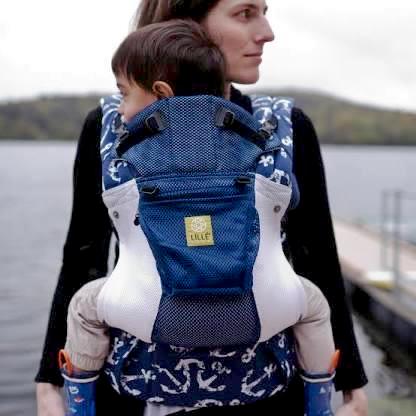

You can also switch to the hip position, or back position once the baby has excellent head control. Baby can face forward once he or she is big enough, which I love since my baby always wants to see what's going on. Like I mentioned above, there is a wide seat and a narrow seat. Since there are six carrying positions, you can make simple adjustments to the Lillebaby to change the carrying position as the baby gets bigger. The first few times I wore my little one who was 7lb 7oz at birth, I just put a rolled up blanket under his bottom until I felt like he was big enough to be carried without it. Lillebaby is one of the few carriers I've found that can adjust from narrow to wide seating to keep baby safe and comfortable.Īnother nice thing is that there is no extra insert needed for newborns. I know there are always concerns about whether the carrier is comfortable for baby and whether the sitting position is ergonomically correct or not. We tried the Baby Bjorn we had received at our first baby shower, but that made my back ache after just a few minutes. Once I had my second, though, we were living in Florida, and the Moby wrap just felt like too much work and too much fabric to deal with in the Florida heat, especially considering baby #2 was born in July. I loved that it kept both of us warm on long walks in the winter, and I loved feeling to close to my baby.

I had no other kids to take care of at the time, so it wasn't a big deal that it sometimes took a couple tries to get the wrap just right. We lived in chilly Minnesota, so I didn't mind all the fabric. With my first baby, I wore her in a Moby wrap until she got too big. I had heard good things about the Lillebaby carriers and was curious about whether they would be a good fit for me. The one thing I felt like I didn't have was a baby carrier that I absolutely loved and was comfortable enough to use for long periods of time. We had a girl, then a boy, so regardless of gender our third baby would be clothed. We had already bought or received hand-me-downs for every swing, bouncer, and gadget a baby could want.
#LILLEBABY COMPLETE AIRFLOW FOR FREE#
In addition, I received my LILLEbaby carrier for free as part of a collaboration with LILLEbaby.īy the time you have your third baby, you really don't need any new gear. That means if you make a purchase through one of my links, I earn a small commission at no extra cost to you. If your child falls asleep in back carry, please switch them to a front carry position so you can ensure they have adequate head and neck support.This post contains affiliate links. Back Carry: It’s the ultimate piggy-back ride and a favorite position for toddlers.Babies supported in a hip carry should be at least 6 months old and demonstrate strong, consistent head support. Hip Carry: Similar to a ring sling, this position allows baby to see the world while still feeling cuddled by their parent.Baby should be at least 6 months old and demonstrate strong, consistent head support. Front-Facing Carry: Set your carrier to the narrow seat, fold down the head support, and turn your baby around to give them a view of the world.Widen the carrier seat to ensure their legs are fully supported in a seated position and not dangling. Inward Facing Carry (Wide Seat/Toddlers): If your child is wearing 18-month to 24-month-old clothing it may be time to change your seat size.Set your carrier to a narrow position to support your little one from knee-to-knee. Inward Facing Carry (Narrow Seat/Babies): Appropriate from newborns through their first year.Set your carrier to a wide seat and use an infant pillow (sold separately) to properly position newborn within the carrier. Fetal Carry: This position for newborns mimicking their position in the womb and may be extra soothing and comforting in their early days.


 0 kommentar(er)
0 kommentar(er)
